A Surprising Yield of Rice Farming Cooperation: Inclusion for Women
July 21, 2022
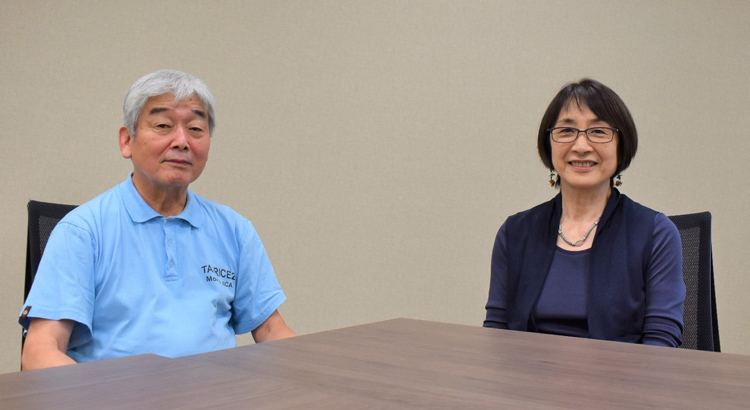
Left: Mr. TOMITAKA Motonori, Former Senior Advisor (Agricultural Development),
Japan International Cooperation Agency
Right: Ms. TANAKA Yumiko: Senior Gender Advisor, Governance and Peacebuilding Department,
Japan International Cooperation Agency.
1. Why "gender inclusion" in rice farming project?
"Early on, my thinking was that if rice yields increased, the project would be a success, " says Mr. TOMITAKA Motonori, Former Senior Advisor (Agricultural Development) at Japan International Cooperation Agency (hereinafter referred to as "JICA"), who has worked to improve rice farming in African countries. "But we realized that what we were really trying to achieve was human happiness and well-being, and that required a broader approach, including promoting gender equality."
Mr. Tomitaka had arrived in Tanzania in 2007 as expert of The Technical Cooperation in Supporting Service Delivery Systems of Irrigated Agriculture under the Agricultural Sector Development Programme (hereinafter referred to as "TANRICE") which conducted during 2007 to 2012, to support rice farmers in increasing their yields. It was his third long-term assignment in Tanzania,
"When I was involved in Kilimanjaro Agriculture Training Center (KATC) project in the 1990s, the preceding project to TANRICE, we asked the men who were participating in the project how things were going and they'd say, ‘Everything's great,' yields are increasing, no problems,' But it was only half of the story. "
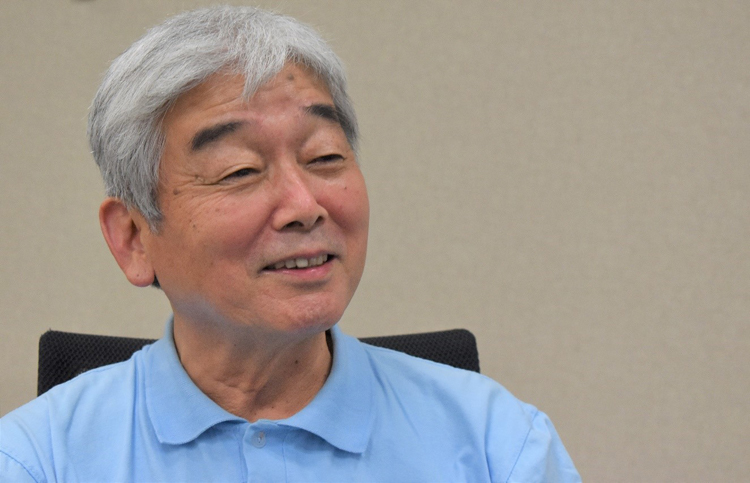
Mr. Tomitaka says that in the middle of KATC project, they found more than 60% of farming works was done by women. "We'd ask women and we'd get a very different picture. They'd say the work was tough, that there were many problems."
"We realized that integrating the gender perspective in project activities is very important for enhancing project effectiveness based on lessons learned from past projects" Mr. Tomitaka recalls. Historically, most of the farmers involved in the agriculture projects had been men.
Based on such lessons, KATC Project Phase 2 (2001-2006) and following projects such as TANRICE, TANRICE2 (2012-2019) and so on, paid attention to gender perspectives and let one half of farmer participants of training on rice cultivation to be women, for example.
Mr. Tomitaka credits an approach of female inclusion in training on rice farming has contributed to positive impact, both on rice production and on local communities.
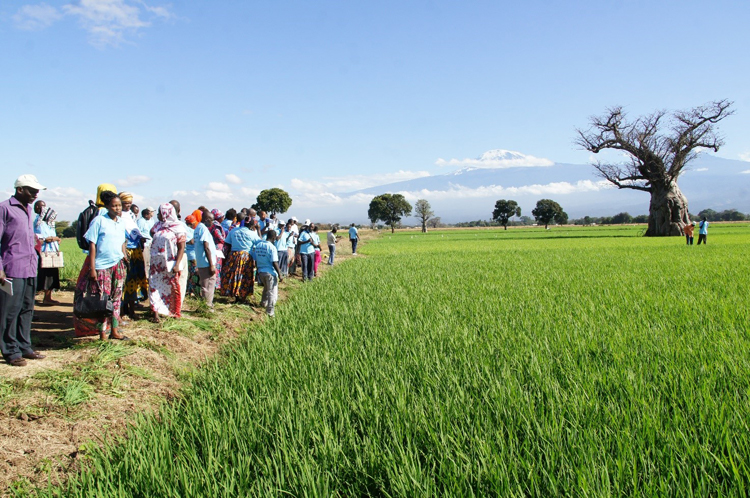
Participants of Gender Seminar visited Lower Moshi Irrigation Scheme in September 2018
(Photo by Mr. TOMITAKA Motonori)
2. How could "gender inclusion" be a key for rice farming project?
Ms. TANAKA Yumiko, JICA Senior Gender Advisor, says that decision to promote "gender inclusion" which is an approach to policy-making that takes into account both women's and men's interests and concerns, involved a shift in thinking on all sides of the project.
Before JICA established its first Gender Equality Office in the 1990s, she says, measures to promote gender equality and empowerment of women were not well-considered in most JICA's projects.
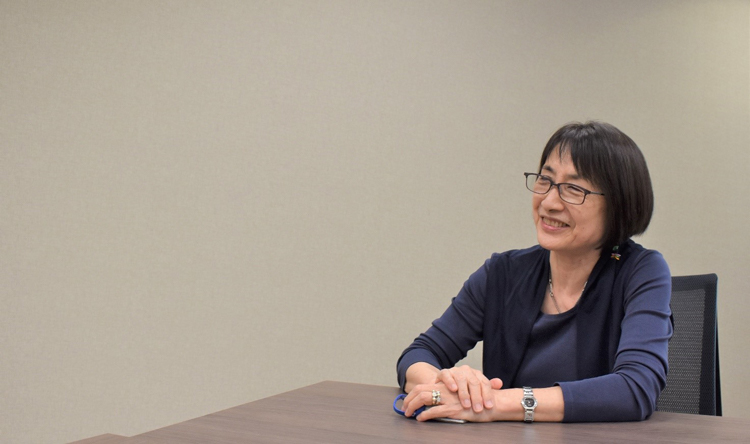
"The majority of agricultural experts from Japan were men, and so were all the project participants," she recalls. "Everyone involved thought of women as just housewives who were not involved in rice farming. But in fact, the people doing most of the farm work were the wives and daughters."
The push for gender equality and transformation of stereotyped gender roles in the Tanzania project stemmed in part from Ms. Tanaka's research on the local agricultural sector.
At training sessions for the farmers, the results of time-use surveys posted on the walls showed clearly that women were engaged in rice farming and working longer and harder than men.
Yet, women didn't have a voice for decision-making at home and community.
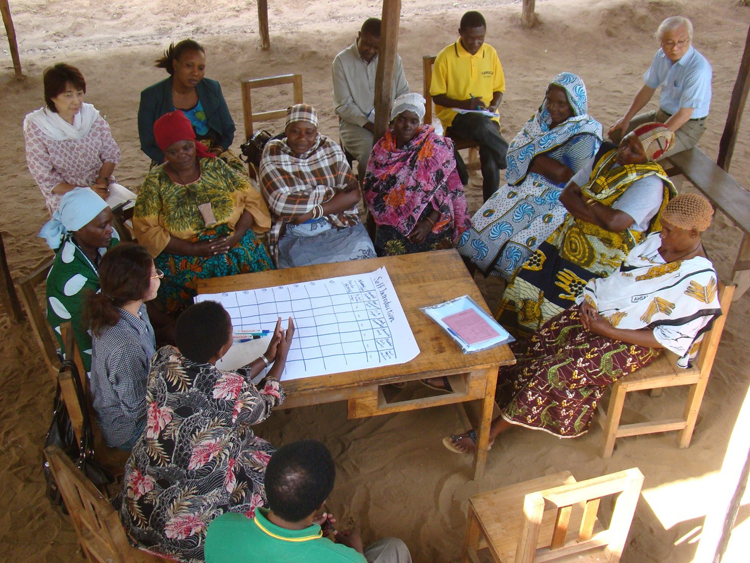
Gender Workshop held in Tanzania (Photo by Ms. TANAKA Yumiko)
Irrigated rice cultivation is a technical craft. Paddy plots need to be precisely leveled, irrigation infrastructure built and maintained, and water rights managed among multiple stakeholders and communities.
Yet, women didn't have a voice for decision-making at home and community. "When you only train men, a lot of the information and skills never gets to the people who really need it, the women," Ms. Tanaka says.
Other facets of the project benefitted from a more inclusive approach, including training in family budgeting and financial management.
"Only around 10 percent of farmers in Tanzania keep financial accounts, including recording the costs and revenues associated with their farms," says Ms. Tanaka. One goal of the project was to nurture the required skills and habits, and husbands and wives were encouraged to work together.
"Too often, women do the work and men spend the money-and not always wisely," says Ms. Tanaka. "Getting women involved tends to change that."
3. Tanzanian ownership toward gender inclusion and rice farming
Both Ms. Tanaka and Mr. Tomitaka emphasized that Tanzanian ownership was behind the success of TANRICE and TANRICE 2 while integrating gender perspective. Gender inclusion wasn't a foreign idea imposed on Tanzania by Japan-a country that is currently trying to empower women in the society itself.
"Achieving gender equality and women's empowerment is a Tanzanian goal," Ms. Tanaka says. "There is a ministry called the Ministry of Community Development, Gender, Women and Special Groups in Tanzania, and realizing gender equality, women's empowerment and youth inclusion is a high priority in their national gender policies and strategies. What we did was extend the idea, which tends to be focused on education and healthcare, into this particular area of agriculture."
"Ownership by the Ministry of Agriculture, Food Security and Cooperatives (then), the counterpart of the project, was tremendous as well," Mr. Tomitaka says. "The Tanzanian Government not only assigned rice researchers, agricultural tutors and extension officers to TANRICE activities but also shouldered about 60% of the cost of conducting rice cultivation courses for 40 irrigation schemes."
This cooperative, mutually supportive approach has long been the guiding principle for Japan's engagement in Africa. TICAD emphasizes "ownership and partnership," including the importance of African local leadership, in particular women's leadership, a theme that will be a keynote for the upcoming TICAD8, which will be hosted by Tunisia in August 2022. It will be the second time an African country to host the event, after Kenya hosted TICAD VI in 2016.
The approach is one that Ms. Tanaka sees in the push for gender transformation in the TANRICE.
"Japan, Tanzania, and the world are all evolving on this issue together."
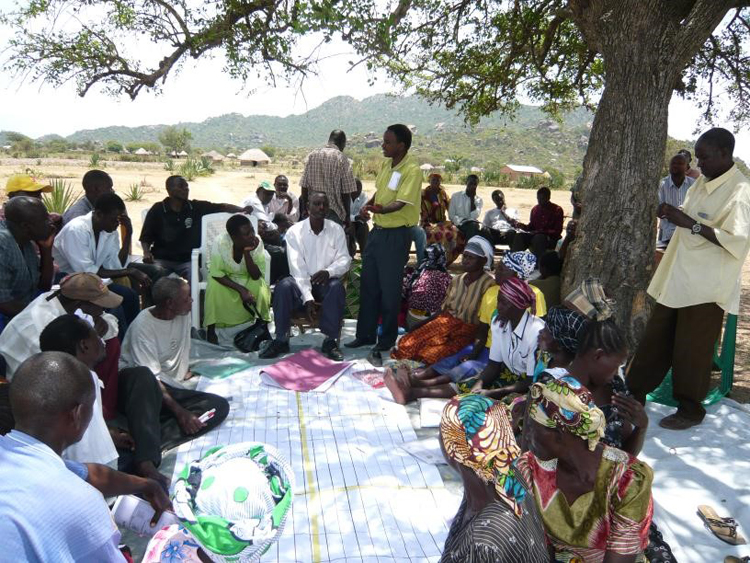
Training in financial management held in Tanzania (Photo by Ms. TANAKA Yumiko)
4. Japan continues strong support for rice farming in Africa since 1970s
Japan has been supporting rice farming in Africa since the 1970s, starting in the Kilimanjaro Region of Tanzania. Since then, Japan has gradually expanded rice farming projects all over the country, and the continent.
One remarkable initiative that Japan has been conducting in African rice farming development currently is the Coalition for African Rice Development (hereinafter referred to as "CARD") (2008-2018), a collaborative framework involving 23 African countries as well as international organizations.
It was announced in 2008, at the Fourth Tokyo International Conference on African Development (TICAD IV) in Yokohama. The aim of the initiative was to double rice production in Sub-Saharan Africa. In fact, during Phase1, the target to increase from 14 million tons/year in 2008 to 28 million tons/year in 2018 was successfully achieved.
TANRICE, the Project for Supporting Rice Industry Development in Tanzania (TANRICE2: 2013-19) and other rice related projects/interventions in Tanzania, contributed CARD achieve its goal. The production of paddy rice in Tanzania was increased about 2.4 times in the decade from 1,420,570 tons in 2008 to 3,414,815 tons in 2018 according to Food and Agriculture Organization Corporate Statistical Database (FAOSTAT).
In 2019, CARD Phase 2 was launched at TICAD7 expanding its scope to cover 32 countries in total and aiming to redouble the rice production in Sub-Saharan Africa from 28 million tons/year to 56 million tons/year by 2030 through RICE approach (Resilience, Industrialization, Competitiveness and Empowerment).
Implementation of CARD Phase 2 will contribute to further strengthen Africa's food security now threatened by external shocks such as Ukrainian crisis.
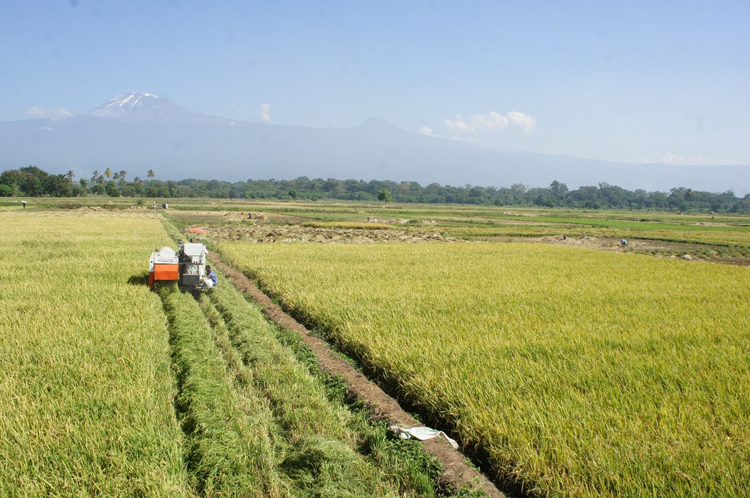
Harvesting paddy by machine is faster, cleaner and cheaper than by human
(Photo by Mr. TOMITAKA Motonori)

